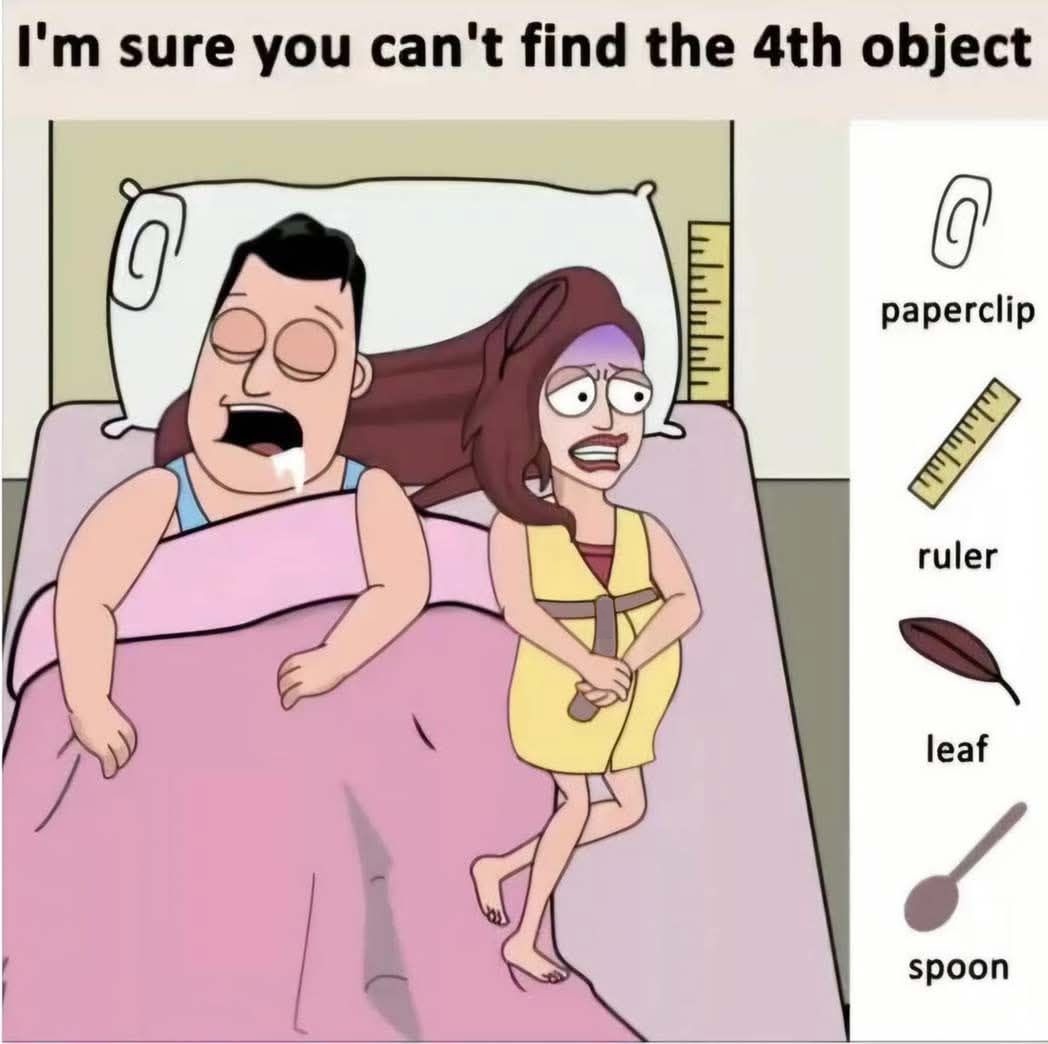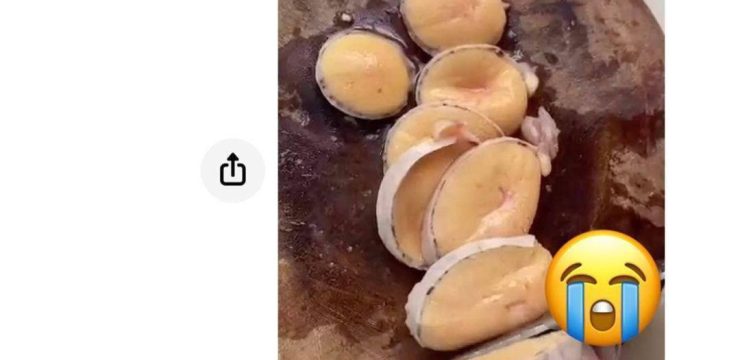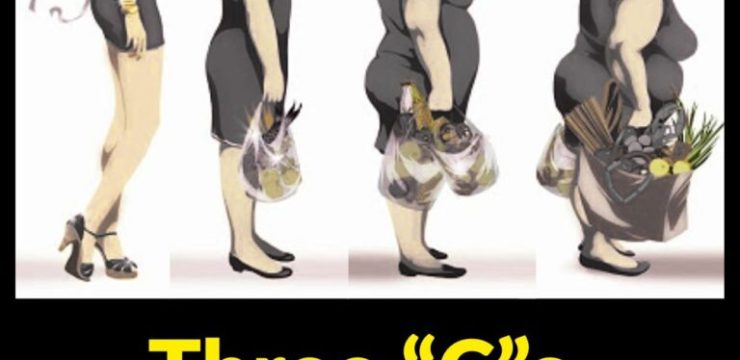Puzzles are a fun and effective way to give your brain a workout, and when they’re combined with a bit of humor and a clever twist, they become even more enjoyable. One particular brain teaser that has recently gained attention features an image of a man sleeping peacefully while a woman next to him appears puzzled and deep in thought. Alongside this quirky scene is a challenge: find four objects—a paperclip, a ruler, a leaf, and a spoon.

Sounds simple, right? But here’s the catch—the image claims you won’t be able to find the fourth item, the spoon. This instantly sparks curiosity and adds an extra layer of fun. Let’s break it down. The first three objects are straightforward and easy to spot. The paperclip is something we’re all familiar with—a tiny office essential often found scattered around desks or tucked inside drawers. The ruler is just as recognizable, commonly used in schools and offices to measure and draw straight lines. Then there’s the leaf, which stands out among the man-made items because it’s natural.
Its shape and texture make it easy to distinguish from the rest. So far, everything seems easy. But once you start looking for the spoon, the challenge begins. Unlike the other objects that are clearly placed and easy to identify, the spoon is hidden in a very clever way. It’s not on a table, nor on the floor. In fact, it’s not even placed in the scene in a traditional sense. The spoon is actually tucked into the woman’s right hand, making it much harder to see at first glance. This is where the puzzle really tests your observation skills. Many people might overlook the spoon entirely, simply because they’re not expecting it to be hidden in someone’s hand. It’s a brilliant little trick that takes this simple image and turns it into a brain teaser.
What makes this puzzle even more entertaining is the humorous aspect of the scene. The man is fast asleep, completely unaware, while the woman is clearly stressed and trying hard to figure something out. It adds a fun, relatable touch—how often have we been the one trying to solve something while others around us seem completely relaxed? The way the spoon is hidden is almost like the puzzle is playing a little joke on you. It’s right there in front of you, but because it’s subtly obscured, your brain doesn’t register it immediately. It’s like the image is saying, “Gotcha!” The challenge here isn’t just about finding an object—it’s about sharpening your attention to detail. Puzzles like this encourage us to look beyond the obvious and pay attention to the small stuff. It’s an excellent way to train your brain to notice more, which can be helpful in all kinds of everyday situations.
@soy_dominik♬ sonido original – Soy Dominik
Whether it’s spotting a typo in a document, finding your misplaced keys, or just noticing something others might miss, this kind of mental practice can really come in handy. What makes this particular puzzle design so clever is its use of subtlety. In many puzzles, all the objects are laid out clearly, often next to each other. But this one breaks the mold by hiding the answer in an unexpected spot. That forces your brain to let go of assumptions and consider alternatives. It reminds us not to always trust our first impression and that sometimes, we need to take a second, closer look. This kind of twist makes the puzzle more rewarding when you finally figure it out. Once you spot the spoon in the woman’s hand, you feel a mix of relief, satisfaction, and maybe even a little laughter at how long it took you to notice something so obvious. It’s a great example of how even a simple visual can create a surprisingly complex mental challenge. Not to mention, puzzles like this are perfect for sharing with friends or family. They spark conversation, fuel a little friendly competition, and often end in some good-natured teasing when someone just can’t find the hidden object. In the end, this puzzle is more than just a game—it’s a reminder that the answers we’re looking for are sometimes right in front of us. All it takes is a bit of patience, focus, and a willingness to see things from a different angle.





